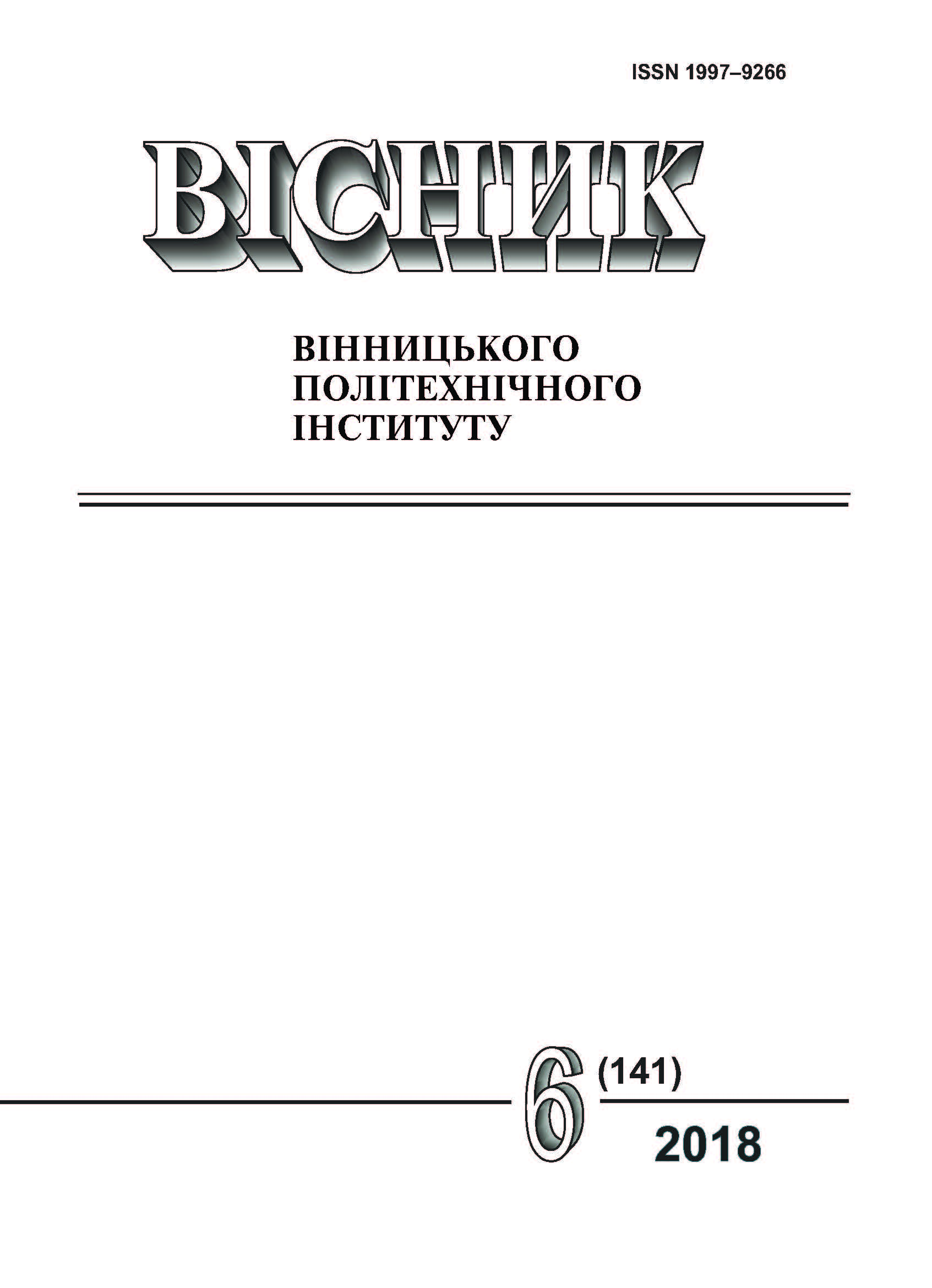Justification for the Choice of the Locating Charts of the Workpieces in the Fixtures During Machining on Multipurpose Machining Centers of the Drilling-Milling-Boring Group
DOI:
https://doi.org/10.31649/1997-9266-2018-141-6-111-118Keywords:
fixture, locating chart, accuracy, quality, flexibility, workpieceAbstract
The issues of ensuring the accuracy and quality of parts machining on CNC drilling-milling-boring machine tools in modern multiproduct manufacturing require continuous improvement. The number of charts for setup complex geometry parts in the conditions of multiaxis machining requires a well-grounded choice of the locating chart of the workpiece and specifies special requirements for fixture design. Based on the analysis of manufacturing processes for the manufacture of machine-building products of different groups on multipurpose machining center, a system analysis of locating charts workpieces in fixtures was performed. The article deals with the reasonable choice of the locating charts of workpieces considering their design and technological features. The results of analytical studies of typical representatives of the parts of different groups are presented, which allowed to highlight the main difficulties in the implementation of their machining. The characteristic features of locating a number of groups of parts using fixtures are described in detail. Based on the results of analytical studies the method of a reasonable choice of the locating chart of the workpiece during the machining on the drilling-milling-boring machine tools is offered. The formation of requirements for functional elements of fixtures, providing the appropriate methods of implementation is considered. The result of solving a technological problem in the work was an orderly presentation of the methods for implementing theoretical locating charts of workpieces, considering their relationship with the geometric shapes of the workpiece. The practical value of the research is to implement the proposed method at the design stage of fixtures, which will reduce the cost of fixture design in the conditions of multiproduct manufacturing.
References
В. В. Ерохин, «Обеспечение качества станочных приспособлений,» автореф. дис. д-ра техн. наук: спец. 05.02.08 «Технология машиностроения». Брянск, 2007. 412 с.
В. Є. Карпусь, В. О. Іванов, та О. В. Котляр, Інтенсифікація процесів механічної обробки. Суми: Сумський державний університет, 2012. 436 с.
Bi Z. M., and Zhang W. J., “Flexible fixture design and automation,” International Journal of Production Research, no. 39, pp. 2867-2894, 2001.
F. Nixon, Managing to Achieve Quality and Reliability. Maidenhead, McGraw Hill, 1971.
Y. Rong, and Y. Zhu, Computer-Aided Fixture Design. New York, Marcel Dekker, 1999.
В. А. Прокопенко, и А. И. Федотов, Многооперационные станки. Львов: Машиностроение, 1989. 180 с.
В. Є. Карпусь, В. О. Іванов, Д. О. Міненко, та І. М. Дегтярьов, «Швидкопереналагоджувані базуючі модулі для установлення корпусних деталей,» Нові матеріали і технології в металургії та машинобудуванні, № 2, с. 91-94, 2012.
V. Ivanov, I. Dehtiarov, and J. Zajac, “Flexible fixtures for parts machining in automobile industry”, Proceedings of 2nd EAI Int. Conf. on Management of Manufacturing Systems (MMS-2017), Slovakia, 2018, 15 p. https://doi.org/10.4108/eai.22-11-2017.2274155.
I. Boyle, Y. Rong, and D. Brown, “A review and analysis of current computer-aided fixture design approaches,” International Journal Robotics and Computer-Integrated Manufacturing, vol. 27, pp. 1-12, 2011.
S. Pehlivan, and J. Summers, “A review of computer-aided fixture design with respect to information support requirements,” International Journal of Production Research, vol. 46, no. 4, pp. 929-947, 2008.
В. Е. Карпусь, та В. А. Иванов, «Современные требования к технологической оснастке станков с ЧПУ,» Вісник Національного технічного університету «Харківський політехнічний інститут», № 22, с. 23-35, 2008.
O. J. Bakker, T. N. Papastathis, S. M. Ratchev, and A. A. Popov, “Recent research on flexible fixtures for manufacturing processes,” Recent Patents on Mechanical Engineering. vol. 6, no 2. pp. 107-121, 2013. https://doi.org/10.2174/2212797611306020003.
H. Tohidi, and T. AlGeddawy, “Planning of modular fixtures in a robotic assembly system,” Pro-cedia CIRP, no 41, pp. 252-257, 2016. https://doi.org/10.1016/j.procir.2015.12.090.
L. Hui, C. Weifang, and S. Shengjie, “Design and application of flexible fixture,” Procedia CIRP, no 56, pp. 528-532, 2016. https://doi.org/ 10.1016/j.procir.2016.10.104.
B. A. Posindu, et al. “A novel fixturing system for complex shaped components,” in: 2017 Moratuwa Engineering Research Conference, Moratuwa: IEEE, 2017. pp. 221-224. https://doi.org/10.1109/MERCon.2017.7980485.
H.-C. Mohring, et al., “Modular intelligent fixture system for flexible clamping of large parts,” Journal of Machine Engineering, vol. 17, no 4, pp. 29-39, 2017. https://doi.org/10.5604/01.3001.0010.7003.
Erdem I., et al. “A novel comparative design procedure for re-configurable assembly fixtures,” CIRP Journal of Manufacturing Science and Technology, vol. 19, pp. 93-105, 2017. https://doi.org/10.1016/j.cirpj.2017.06.004.
S. Gothwal, and T. Raj, “Conceptual design and development of pneumatically controlled flexi-ble fixture and pallets,” International Journal of Services and Operations Management, vol. 29, no 2, pp. 147-162, 2018.
https://doi.org/10.1504/IJSOM.2018.089246.
V. Ivanov, and J. Zajac, “Flexible fixtures for CNC machining centers in multiproduct manufacturing,” EAI Endorsed Transactions on Industrial Networks and Intelligent Systems, vol. 4, no 12, e4, 2018. https://doi.org/10.4108/eai.10-1-2018.153552.
V. Ivanov, S. Vashchenko, and Y. Rong, “Information support of the computer-aided fixture design system,” Proc. of 12th Int. Conf. ICTERI’2016 (June 21–24, Kyiv, Ukraine). Kyiv, Ukraine, 2016. CEUR-WS.org, online CEUR-WS.org/Vol-1614/paper_37.pdf.
Рекомендована кафедрою технології машинобудування та металорізальних верстатів ВНТУ
Downloads
-
PDF (Українська)
Downloads: 453
Published
How to Cite
Issue
Section
License
Authors who publish with this journal agree to the following terms:
- Authors retain copyright and grant the journal right of first publication.
- Authors are able to enter into separate, additional contractual arrangements for the non-exclusive distribution of the journal's published version of the work (e.g., post it to an institutional repository or publish it in a book), with an acknowledgment of its initial publication in this journal.
- Authors are permitted and encouraged to post their work online (e.g., in institutional repositories or on their website) prior to and during the submission process, as it can lead to productive exchanges, as well as earlier and greater citation of published work (See The Effect of Open Access).





